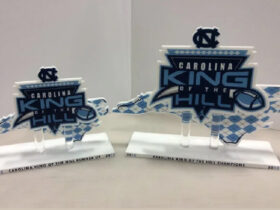Are you struggling with your company’s logo? Is it time for a change?
These are common problems among companies, especially startups. Many people believe that any logo is better than no logo. But when it comes to business logos and brand identities, any design is not better than the others.
Sometimes you may need to start from scratch for the design to meet your business. Here is everything you need to know about the role of texture and symbology in business logos.
Significance of Tactile Elements in Logos
Examining the tactile elements of a logo enables businesses to better understand how their logo will be perceived. This is because only the best elements are used to set up a strong connection with their target audience.
Textures and symbols in logos evoke emotions. It has meanings that can range from a simple association between a physical sensations. It can be simply a product of a larger understanding of symbolic connotations.
By choosing the right combination of texture and symbology, businesses can engage their target audiences and communicate their message.
Visual Cues Create Powerful Logos
Texture brings depth and an element of tangible quality to logos, while symbology can quickly convey an association with the logo and a message associated with the brand.
This makes texture and symbology integral elements of logo design. It helps evoke feelings and create instant recognition. It can effectively give a logo with edges that makes it visually captivating. It makes it memorable and associated with powerful emotions.
Businesses can use a business logo maker to create a strong logo identity. You can communicate a clear message using unique fonts for logos.
Core Concepts of Symbology Applied to Logos
Symbology conveys a level of sophistication and power to a logo. It’s hard to get without icons, images, or words. It can also be used to convey a deep understanding of a company’s mission and values.
By infusing texture with symbology, a logo can become much more dynamic and powerful. For example, the abstract swoosh of Nike’s iconic logo perfectly evokes the image of a runner’s form and speed.
It also includes features such as typefaces, colors, and other graphic elements. Once again, the logo must be designed with an end goal in mind.
Explore the Role of Texture and Symbology in Business Logos Starting Today
Business logos can have a huge impact on how a brand is perceived. Texture and symbology are two aspects of business logo design that can help portray a company’s values and create a lasting impression.
Logos should be used thoughtfully, considering both texture and symbology for an effective result. Developing a strong logo is essential to success, so explore the role of texture and symbology in business logos. Get started today!
If you want to explore the best topics, we’ve got you covered. Check out some of our other blogs today!









